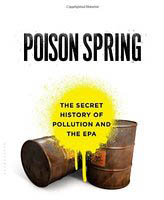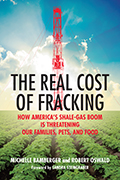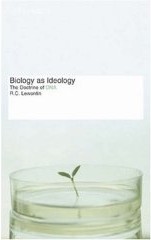“Independent Science News is an important window for the truth seekers in an age when corporations have manipulated science to protect their profits at the cost of precious lives.” — Vandana Shiva, PhD
Scientific facts are not always what they seem. Whether it’s counting the future world population, quantifying the deaths following Chernobyl, or determining the safety or the effectiveness of commercial products (from pharmaceuticals to basic foodstuffs), powerful interests routinely succeed in influencing the answers. In science, external forces influence strongly what is studied, what is published, and what is reported. When that happens, individuals (or policymakers) no longer have the information to decide rationally and choose thoughtfully. Society becomes dysfunctional at a fundamental level.
Manipulation of science can be surprisingly easy. That is because, at every level within it, important decisions are typically not transparent (even to other scientists). Manipulation is also aided by science’s protective mythology of impartiality and rigour that deters questioning by outsiders. Therefore, it often goes unnoticed.
But of perhaps even greater concern than the manipulation of facts is what happens to scientific ideas. Over the last 50-60 years, selected scientific ideas have been actively promoted out of all proportion to their evidence base. These specific ideas were ones deliberately chosen for their potential to channel popular thinking to fit various corporate agendas.
Perhaps the most stunning example of this is how corporations and governments have conspired to create a genetic determinist understanding of society and of human nature, even though the evidence to support that view is missing. These interests have sought to manufacture a public consensus that genes (and not junk food, pesticides or poor public policies) are chiefly to blame for ill heath, inequality and social dysfunction. From the 1950s onwards the tobacco industry (at first alone) massively funded human genetic research in an attempt to shift blame for tobacco-related illnesses onto purported genetic predispositions (i.e. away from society and onto individuals). Thus a strategy rooted in an unsupported scientific idea nevertheless repeatedly shifted legal opinion and public policy attention away from the activities of the companies and their products. Without its secret manipulation of genetic research it is likely the tobacco industry would not exist today.
In a separate example, the efficacy of animal experimentation has for many years been grossly exaggerated by chemical corporations who need a scientific reassurance to offer to a population that is exposed to and contaminated by their products. Note a key point: that in both cases this type of intellectual manipulation is hard to detect because the specific ideas (genes cause disease; animal experiments work) appear politically neutral. They are not overtly associated with any product or organization. The ultimate intent of such deceptive ideas (more examples below), which originate often with PR companies, is to constrain public thought and shift mass opinion into narrow bounds amenable to those powerful interests. The ultimate long term goal is to permit politicians (for example) to declare, apparently rationally and in good faith, that there is no alternative to a chosen policy when in fact the arguments in favour are based on a hidden ideology. This manipulation of information is all necessary because, as Abraham Lincoln said, “With public opinion nothing can fail; without it nothing can succeed”.
Examples of science journalists exposing deceit and manipulation are rare. They are rare mostly (though not entirely) because science reporters, even at Science magazine and the New York Times, see themselves less as investigative journalists and more as explainers of science. Such journalists typically lack the independence, the public interest focus, and often the expertise, to contextualise scientific results and penetrate the inner logic of institutional agendas. These qualities are now necessary to explain much of science.
In no field of human endeavour is this more true or more important than in the subjects covered by Independent Science News (ISN): health, food and agriculture.
Therefore, the two aims of ISN are to call attention to defects in science and in the science media and to remedy them as far as possible.
At ISN we choose our stories carefully. Most concern simultaneous manipulations of the scientific process, the food/ag system, and the science media. These stories are deep: they have evolved, often over decades, they have often cost their perpetrators hundreds of millions (sometimes hundreds of billions) of dollars to organize, and required extensive research to uncover and understand. Consequently, we encourage readers to look at older stories from ISN. Readers should find these stories every bit as interesting and original as the newer ones. The remarkable facts and conclusions have in every case stood the test of time. All stories are ongoing. Just possibly you have new information on them. If so, please contact us.
We particularly recommend the following ISN articles as guides to continuing global events:
1. The mass co-option of well-known international conservation non-profits by the corporate food system: Way Beyond Greenwashing.
2. The bankrolling of genetic determinism and human genomics to conceal environmental causes of ill health: The Great DNA Data Deficit; Psychiatrists Plea to Continue Funding of Genetic Approaches; Still Chasing Ghosts; Science as Social Control; The Twin Research Debate in American Criminology.
3. The active misleading of the public by the science media: How the Science Media Failed the IAASTD; What is Nature Biotechnology Good For?; Fakethrough!.
4. The lack of usefulness of animal experiments: The Experiment Is on Us and The Failing Animal Research Paradigm for Human Disease.
5. Collusion between scientific publications and the life science industry: Strangely Like Fiction (about rBGH); The Goodman Affair.
6. False agribusiness claims about the safety and performance of GMO food and crops: Bee Learning Behaviour Affected by GMO Toxins; Roundup-Ready to Yield?; Regulators Discover a Hidden Viral Gene in Commercial GMO Crops.
Independent Science News relies entirely on the generous support of our readers. Here is why. We do not accept commercial advertisements or funding. ISN is part of the Bioscience Resource Project. Click here for up-to-date information about our funding sources. We welcome support of a financial, and non-financial nature. Even a small financial contribution helps maintain our legal non-profit status. Please consider a donation today.
To receive our articles when they come out, send an email to: info ( at )bioscienceresource.org or subscribe to our mailing list here:
“The only security of all is in a free press” – Thomas Jefferson
“I know not any crime so great that a man could contrive to commit as poisoning the sources of eternal truth.” – Dr. Johnson
Our online comment policy is here
 Jonathan R Latham, PhD is co-founder and Executive Director of the Bioscience Resource Project and the Editor of Independent Science News. Dr. Latham holds a Masters degree in Crop Genetics and a PhD in Virology. He was subsequently a postdoctoral research associate in the Department of Genetics, University of Wisconsin, Madison. He has published scientific papers in disciplines as diverse as plant ecology, plant virology, toxicology, genetics, and genetic engineering. Dr Latham is also the Director of the Poison Papers project which publicizes documents of the chemical industry and its regulators.
Jonathan R Latham, PhD is co-founder and Executive Director of the Bioscience Resource Project and the Editor of Independent Science News. Dr. Latham holds a Masters degree in Crop Genetics and a PhD in Virology. He was subsequently a postdoctoral research associate in the Department of Genetics, University of Wisconsin, Madison. He has published scientific papers in disciplines as diverse as plant ecology, plant virology, toxicology, genetics, and genetic engineering. Dr Latham is also the Director of the Poison Papers project which publicizes documents of the chemical industry and its regulators.
“Jonathan Latham always asks the next question, the one beyond the one that only seems to be trying to get at the right answer. His work is invaluable.” — Joan Dye Gussow (Prof Emerita, Columbia University)







